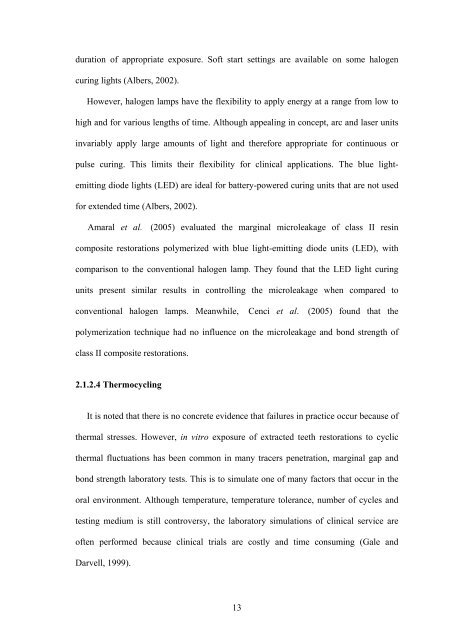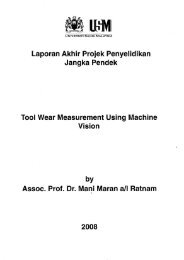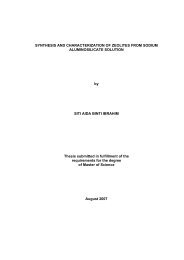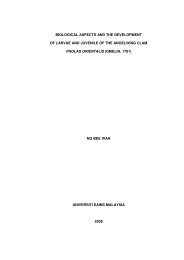microleakage in class ii composite restorations ... - ePrints@USM
microleakage in class ii composite restorations ... - ePrints@USM
microleakage in class ii composite restorations ... - ePrints@USM
Create successful ePaper yourself
Turn your PDF publications into a flip-book with our unique Google optimized e-Paper software.
duration of appropriate exposure. Soft start sett<strong>in</strong>gs are available on some halogencur<strong>in</strong>g lights (Albers, 2002).However, halogen lamps have the flexibility to apply energy at a range from low tohigh and for various lengths of time. Although appeal<strong>in</strong>g <strong>in</strong> concept, arc and laser units<strong>in</strong>variably apply large amounts of light and therefore appropriate for cont<strong>in</strong>uous orpulse cur<strong>in</strong>g. This limits their flexibility for cl<strong>in</strong>ical applications. The blue lightemitt<strong>in</strong>gdiode lights (LED) are ideal for battery-powered cur<strong>in</strong>g units that are not usedfor extended time (Albers, 2002).(Amaral et al., (2005) evaluated the marg<strong>in</strong>al <strong>microleakage</strong> of <strong>class</strong> II res<strong>in</strong><strong>composite</strong> <strong>restorations</strong> polymerized with blue light-emitt<strong>in</strong>g diode units (LED), withcomparison to the conventional halogen lamp. They found that the LED light cur<strong>in</strong>gunits present similar results <strong>in</strong> controll<strong>in</strong>g the <strong>microleakage</strong> when compared toconventional halogen lamps. Meanwhile, (Cenci et al., (2005) found that thepolymerization technique had no <strong>in</strong>fluence on the <strong>microleakage</strong> and bond strength of<strong>class</strong> II <strong>composite</strong> <strong>restorations</strong>.2.1.2.4 Thermocycl<strong>in</strong>gIt is noted that there is no concrete evidence that failures <strong>in</strong> practice occur because ofthermal stresses. However, <strong>in</strong> vitro exposure of extracted teeth <strong>restorations</strong> to cyclicthermal fluctuations has been common <strong>in</strong> many tracers penetration, marg<strong>in</strong>al gap andbond strength laboratory tests. This is to simulate one of many factors that occur <strong>in</strong> theoral environment. Although temperature, temperature tolerance, number of cycles andtest<strong>in</strong>g medium is still controversy, the laboratory simulations of cl<strong>in</strong>ical service areoften performed because cl<strong>in</strong>ical trials are costly and time consum<strong>in</strong>g (Gale andDarvell, 1999).13
















